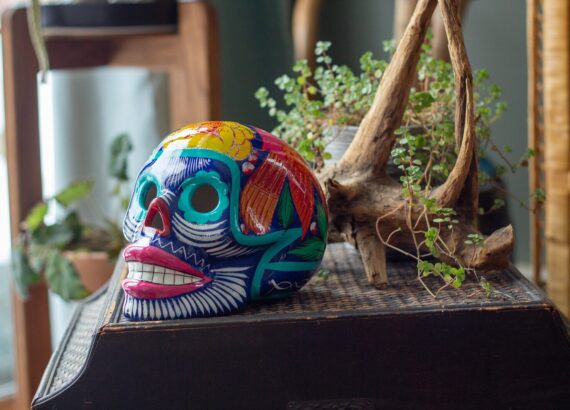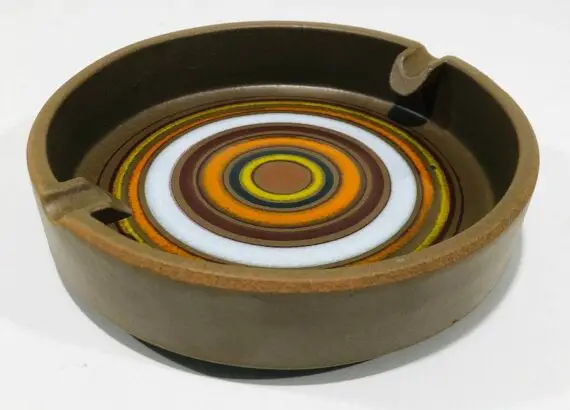Complete Guide to Jackfield Pottery: History, Description, Examples
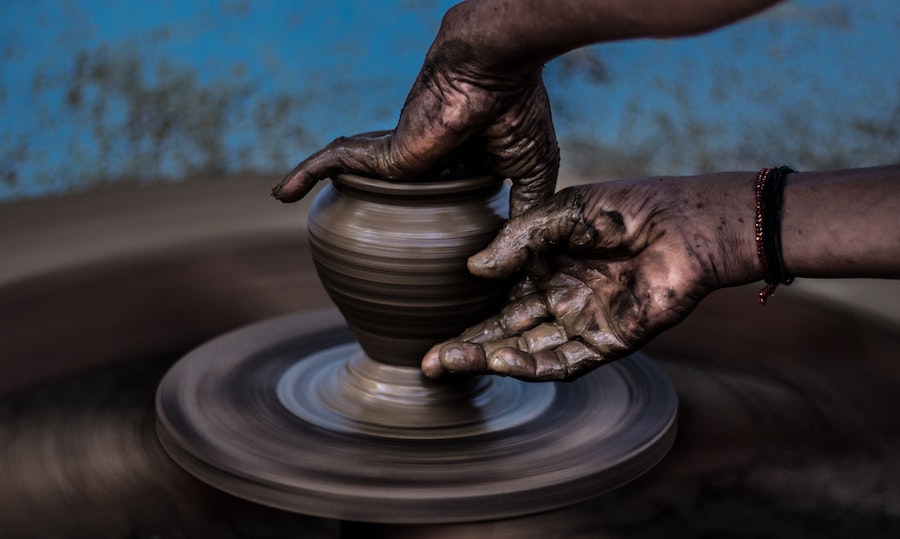
A quick tour of your local china shop would reveal the many intricacies associated with the different signatures of each potter, and jackfield pottery, perhaps, is one of the most unique and easily spotted ones.
Typically deep black, grey, purple or reddish-brown pottery with thin walls, jackfield pottery, also referred to as jackfield-type ware.
They prided themselves in the production of pottery with extremely low porosity, which made them ideal for functional utilities and utensils like pitchers, ceramic tiles, vases, and so on.
History of Jackfield Pottery
Jackfield pottery is used to describe pottery made in the ceramics factory during the early 18th century in Jackfield, Shropshire in England, typically with rich black glazing atop relief and oil-gliding designs.
The factory was founded in 1713 by Richard Thursfield and was passed down as a family business.
The works produced by this company usually featured specific intricate designs with Jacobite inscriptions -a common practice around 1745, which was used as a show of loyalty to the exiled King James the II (also known as James the VII in Scotland, the last Catholic monarch of England, Ireland, and Scotland, who was challenged by his son-in-law). [1][2]
Another feature that distinguished Jackfield pottery from the many others that existed at the time was the finesse with which they repeatedly used oil-gliding in decorating their pottery.
In very simple terms, oil-gliding refers to the use of an oil-based glue or adhesive substance to make an impression of something (usually using gold in the form of a leaf or in plain powder form) onto the pottery.
The company is known to have been the creator and supplier of floor tiles that were used in the decoration of a majority of important buildings in the British Empire, many of which exist to this day.
Description of Jackfield Ware
The type of clay used by jackfield pottery was red clay which was fired at a very high temperature, then glazed with cobalt that has been heated to such a high temperature that it changes from deep blue to black.
As can be noted from all jackfield pottery, what is perhaps the most prominent feature is the luster that the black emits.
To achieve this luster, the smoke emitted from the firing process is channeled back into the kiln (or heating medium), thereby infusing the pottery with the carbon deposits from the smoke, which in turn gives it the lustrous sheen.
Most of the designs used in the various forms of jackfield pottery were floral designs, ornamental frames with the initials of the creators, inscriptions upholding Jacobite beliefs, seals and sigils, and so on.
Imitations of Jackfield Pottery
According to some sources, although some form of pottery can be called ‘jackfield pottery,’ some of them were not made in jackfield. [3]
In more specific terms, as jackfield pottery grew in prominence and recognition, some cheaper versions of the pottery began to make several appearances in the market.
Not only did the imitations try to embody the original thing, but the producers of said imitations also went as far as creating trinkets, flower pots, and so on.
Although the jackfield pottery business met underwent a steady decline in the late 1700s, the cheap replicas were still being made well into the 1800s. However, as similar as both pottery were, there were a good number of visible differences between the two.
Differences Between Both Types of Jackfield Pottery.
One difference between them lies in color used in making the designs onto the pottery; while the earthenware of the imitation was given its black color by being painted with iron oxide (a naturally occurring compound which could become toxic to humans if inhaled for prolonged periods of time), the original pottery achieved its color by being fired at a very high temperature, such that they clay turned from red to black.
Another remarkable difference is in the nature of the glazes used. While the original pottery used fired lead or cobalt glazes on both the inside and outside of the pottery, only clear glazes were used for the imitation.
Not only were these cheaper versions potentially dangerous to health, but they also lacked the elegance, style, and overall quality possessed by the original jackfield pottery.
In the 1870s and the time after the production of jackfield pottery was almost overrun by the degenerate versions, a revolution began in the hopes of reviving the nearly lost art and finesse that the jackfield art embodied.
These recent forms of pottery, however, were not particularly confined to the lustrous black color that typified the ancestor. Instead, they came in colors ranging from black to gray and even white terra cotta earthenware. This new wave of jackfield pottery came to be known as Jet Ware.
Examples of Jackfield Pottery.
Jackfield pottery typically produced ceramic products, including floor tiles, cups for tea and coffee, along with their saucers, antique products and figurines, teapots and kettles, and so on.
With respect to the type of pottery produces, as well as examples, here are a few.
A pair of jackfield spaniels. [4]
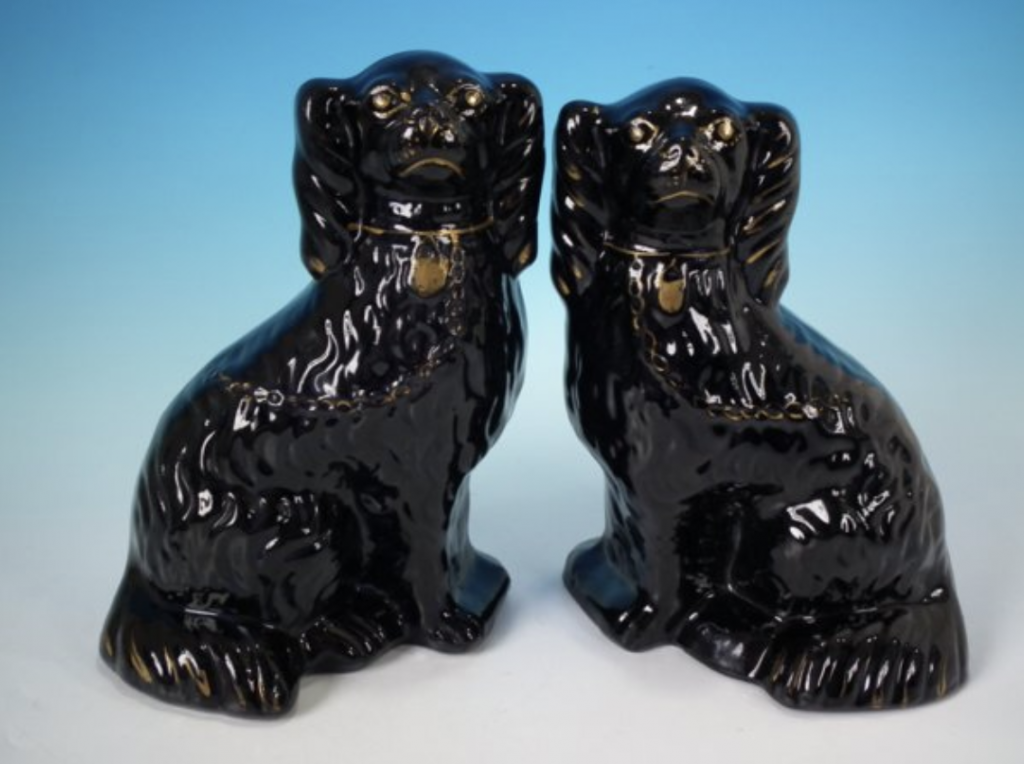
These spaniels are black, with tiny gold tracings, and have no felt on their underside, and is said to have been created sometime around 1860.
A Staffordshire jackfield cow creamer. [5] Also dated circa 1860, this cow creamer is shaped like a cow, with its mouth shaped like a spout.
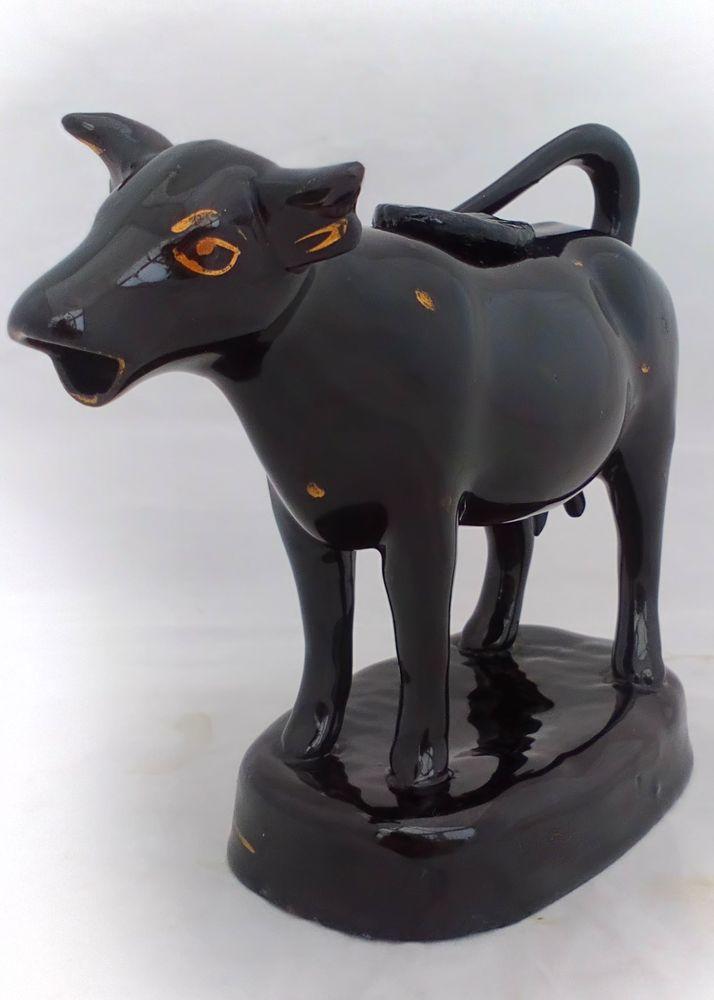
A punch pot. [6] Although the exact date cannot be confirmed, archaeological findings place this artifact to have been created sometime between 1765 and 1770.
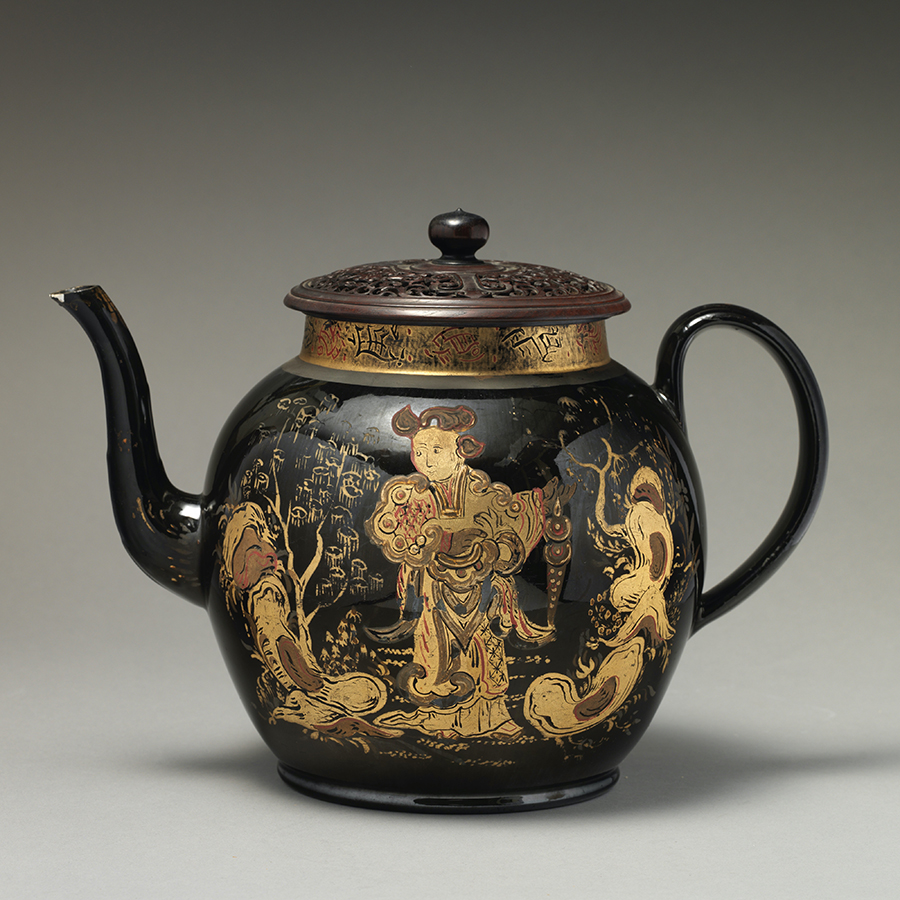
Jackfield pottery, irrespective of its origins, has certainly left an indelible mark of elegance in the world of antiques. Some preferred pseudonyms include blackware, Jackfield-type ware, and jackfield ware.
References
1. Jackfield Pottery, Gordon Campbell
2. Bonnie Prince Charlie and the Jacobites.
3. Diagnostic Artefacts In Maryland.
4. Pair Staffordshire Jackfield Spaniels
5. Staffordshire Jackfield Black Glazed Cow Creamer Gilded Decoration C 1860
6. Punch Pot

